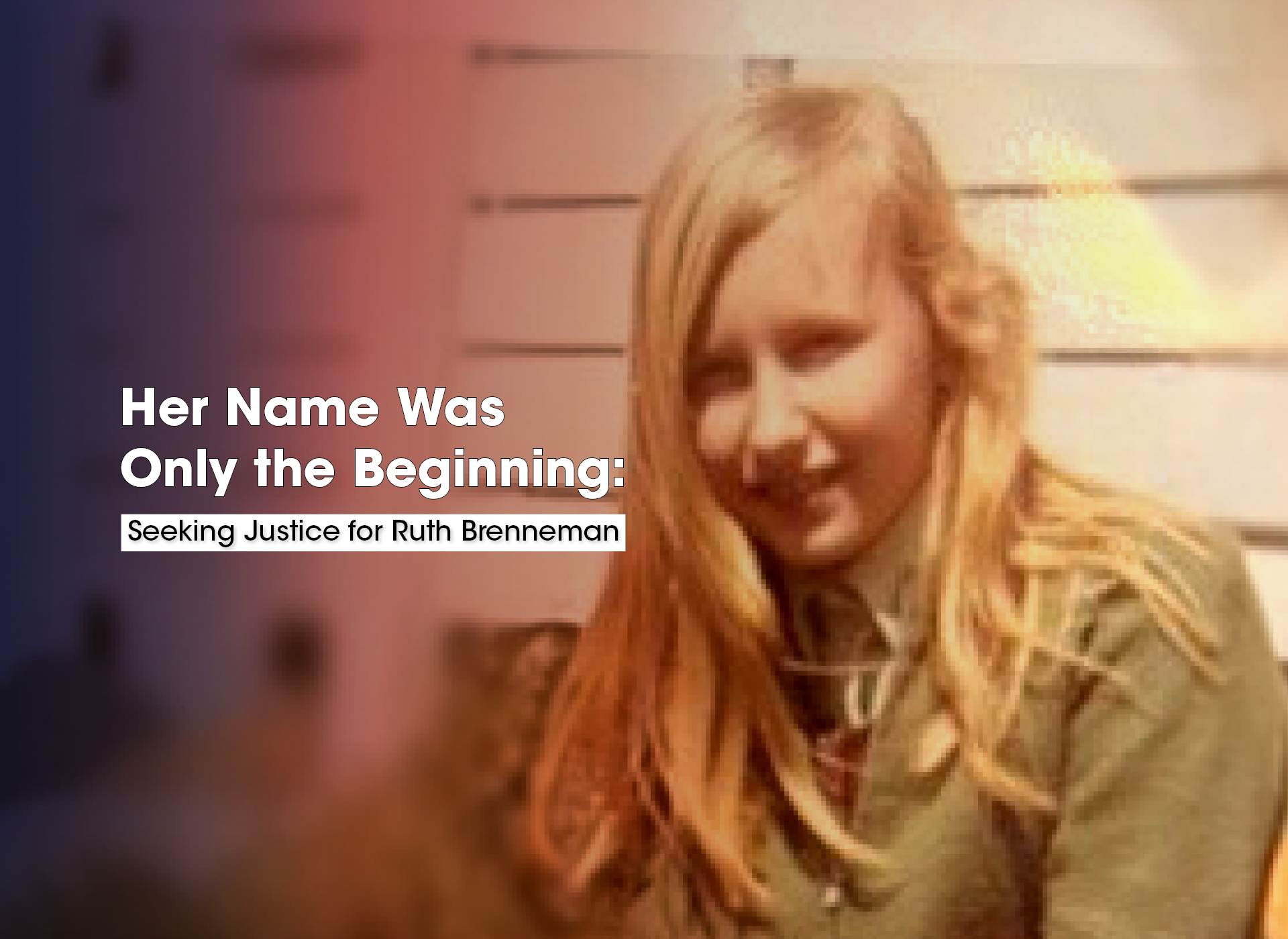Her Name Was Only the Beginning: Seeking Justice for Ruth Brenneman
The National Center for Missing & Exploited Children (NCMEC) is assisting in the identification of more than 600 deceased children whose names are still unknown. It’s meticulous, often heartbreaking work, but it’s not without breakthroughs. Over the years, NCMEC has helped identify more than 400 children.
“When a child finally gets their name back, it’s an indescribable feeling,” said Carol Schweitzer, program manager of NCMEC’s Forensic Services Division. “It means that after sometimes years or decades of wondering who they were, we can finally call them by name. It’s a powerful reminder of why this work matters. But we know for law enforcement, once that name is known, the search for answers is often just beginning.”

Ruth's identification poster.
That was the case for a young woman whose remains were discovered in 1973 on a military base in Union Township, Pennsylvania. For 51 years, her identity remained a mystery until 2024 when “Lebanon County Jane Doe” was finally identified as 14-year-old Ruth Brenneman, a missing teenager from York, Pennsylvania.
Now, as the Pennsylvania State Police are piecing together Ruth’s story and the final days of her life, they’re asking the public for any information that could help solve this case.
“When unidentified human remains are found, there is only so much that can take place within an investigation,” said Crp. Ian Keck, who is working the case. “We take as much as we can from that scene and gather all the evidence. But without knowing the identity, it kind of slows us down.”
But that all changed in recent years with the help of forensic genealogy, which got investigators close to an answer. It led Keck, and his colleague, PSP Trooper Jeff Baney, to the door of Michael Brenneman.
“Immediately after I gave Mr. Brenneman the story, he just came out and said: ‘I have a sister missing from the ’70s,’” said Keck. “It was kind of a surreal moment.”
Michael says his family assumed Ruth had simply run away with her boyfriend and would return when she was ready. At the time, missing teenagers were often dismissed as runaways not seen as potential victims. But Ruth’s story is far more complicated.
After her parents divorced, Ruth first went to live with her father but eventually moved in with Michael and his then-wife. Michael was 20 years old, working second shift and juggling adult responsibilities.
The last time Michael saw Ruth, he dropped her off at school in the fall of 1973 and watched her walk up the steps. She never came home.

Ruth as a teenager.
Five decades later, we now know that Ruth Brenneman died shortly after she was last seen, and her remains were found in a remote area on a military base nearly 50 miles away. Her manner of death was ruled undetermined.
Michael says Ruth suffered from epilepsy, which required daily medication. He recalls that she always wore sunglasses when she was outside because the reflection of light could trigger a seizure. Michael fears that without her medication, Ruth may have experienced a seizure, gone into a coma and died. But if that’s what happened, why was her body found weeks later and many miles from where she was last seen?
“There are still many unanswered questions,” said Keck. “We’re talking about the people who were involved in Ruth’s life five decades ago. They unfortunately may not be here with us today."
Anyone who knew Ruth, interacted with her in 1973 or has heard stories about her disappearance is encouraged to come forward.
“This is still an active investigation,” Keck said. “We’re just looking for anyone’s help. Ruth was 14 years old. She’s someone’s daughter, someone’s sister—and they deserve to have some answers.”
Anyone with information about Ruth Brenneman is asked to contact Pennsylvania State Police Troop L, Jonestown, at 717-865-2194 or PSP Tips at 1-800-4PA-TIPS (1-800-472-8477).
Tips also can be submitted anonymously through psptipsemail@gmail.com, Facebook.com/PSPTips or x.com/psp_tips.
To view the more than 600 cases of unidentified children go to the NCMEC poster search on the website or visit HELP ID ME on Facebook.
